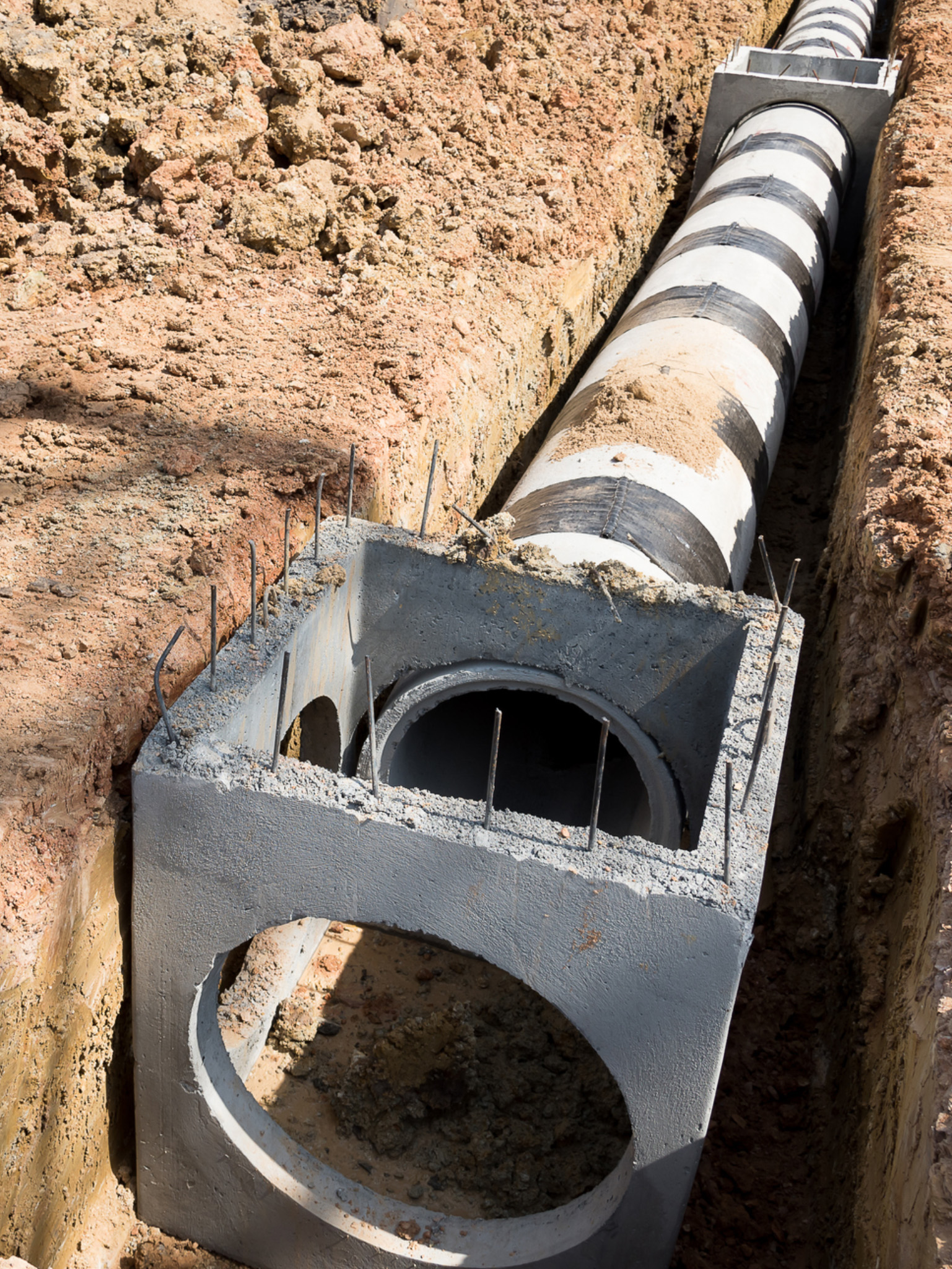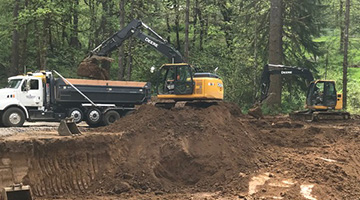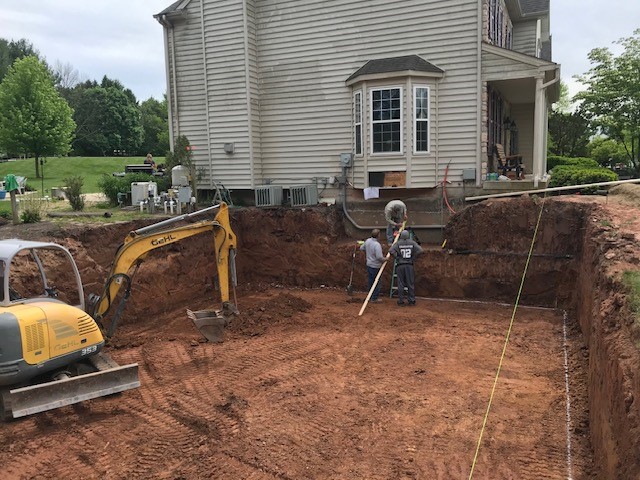Septic Ohio - Comprehensive Septic System Providers in Ohio
Septic Ohio - Comprehensive Septic System Providers in Ohio
Blog Article
Revealing the Art of Excavation: Pro Tips for Safe and Effective Excavating
As soil is transformed and planet is moved, the details of excavation expose themselves, demanding a keen understanding of equipment, soil structure, safety protocols, and environmental considerations. The know-how required to browse these components effectively can suggest the difference in between a successful excavation task and a potential disaster.
Value of Correct Equipment
To make sure the security and performance of any kind of excavation job, making use of the proper devices is vital. Excavation tasks vary in extent and intricacy, ranging from tiny domestic landscape design jobs to massive building and construction undertakings.
Excavators are fundamental items of machinery in any type of excavating procedure. These versatile equipments can be found in different sizes to suit different task needs. Small excavators are optimal for smaller sized jobs, while bigger excavators take on a lot more comprehensive projects successfully. Backhoes are one more vital equipment kind, incorporating the features of a loader and an excavator in one device. They are useful for tasks calling for adaptability and maneuverability.
Aside from excavators, various other important devices consists of dump vehicles, excavators, and trenchers. Dump vehicles are necessary for eliminating and transferring excavated products, while plates are used for excavating slim and deep trenches. Excavators succeed in tasks that require pressing large amounts of soil or particles. By buying the suitable equipment, excavation jobs can be finished securely, on time, and with precision.
Understanding Dirt Structure
An extensive understanding of soil structure is essential for executing excavation tasks with precision and safety and security. Understanding the various kinds of soil is vital as it straight influences excavation methods, tools choice, and total project effectiveness.
Sand fragments are the largest and supply great water drainage however provide little cohesion. Silt fragments are smaller than sand yet larger than clay, offering moderate water drainage and cohesion. Clay particles are the smallest and give high cohesion yet inadequate drain. Organic issue, such as decomposing plant material, impacts dirt fertility and stability.
Before beginning excavation, conducting soil examinations to identify its composition and attributes is necessary. This information assists in selecting the ideal tools, implementing precaution, and developing excavation techniques customized to the certain dirt problems - lancaster trenching. By understanding soil composition, excavation professionals can improve task end results while making sure safety and security and adherence to best practices
Security Measures and Methods
Understanding dirt structure is the keystone upon which security actions and protocols for excavation projects are built, guaranteeing the well-being of workers and the success of the venture. There are several essential procedures that have to be carried out to mitigate dangers and avoid mishaps. when it comes to security during excavation.
First and leading, prior to any digging begins, a detailed examination of the site must be carried out to recognize any possible dangers such as underground energies, unpredictable dirt conditions, or neighboring structures that could present a threat. It is vital to have a skilled person supervise the excavation process to make sure that all safety and security procedures are followed strictly.
In addition, all workers entailed in the excavation should be properly find out this here educated in safe excavating practices and the appropriate operation of equipment. By sticking to these safety actions and protocols, excavation projects can be completed effectively and without incident.
Reliable Excavation Preparation
When starting an excavation job, precise preparation is vital to make certain performance, security, and effective results. Reliable excavation planning entails several vital steps that are crucial for the smooth implementation of the task. The primary step is to conduct a detailed site assessment to identify any kind of potential hazards, such as below ground energies or unpredictable dirt conditions. This details is vital for developing a detailed excavation plan that consists of precaution and risk reduction methods.
As soon as the website evaluation is full, the next step is to develop a clear timeline and routine for the excavation activities. This consists of figuring out the sequence of tasks, tools demands, and manpower allocation. Appropriate scheduling helps prevent delays and makes sure that the project stays on track.

Moreover, communication amongst all group members is vital during the preparation stage. Clear directives, regular updates, and reliable coordination are crucial for an effective excavation project. By investing time and effort in meticulous planning, excavation teams can considerably enhance productivity, reduce risks, and accomplish successful end results.

Handling Environmental Considerations
With increasing emphasis on environmental sustainability in building and construction methods, handling environmental factors to consider has come to be an essential facet of excavation jobs. Excavation activities have the learn the facts here now prospective to influence the surrounding environment through soil disintegration, sediment runoff, environment interruption, and contamination of water sources. To alleviate these threats, it is necessary to apply best practices that focus on ecological protection.

In addition, appropriate waste administration is critical to stop dirt and water contamination. Applying procedures for the disposal of dangerous materials, recycling of waste materials, and lessening using hazardous chemicals can significantly minimize the environmental impact of excavation tasks. By incorporating these techniques right into excavation preparation and execution, building and construction companies can guarantee that their projects are not just secure and efficient yet additionally environmentally accountable.
Verdict
To conclude, understanding the art of excavation needs an extensive understanding of appropriate equipment, soil make-up, security procedures, and efficient preparation. By complying with these guidelines and thinking about ecological factors, excavations can be conducted securely and effectively. It is essential to prioritize security and productivity in every excavating job to guarantee successful outcomes.
As dirt is transformed and earth is relocated, the complexities of excavation expose themselves, requiring a keen understanding of devices, soil structure, security protocols, and ecological considerations.To make sure the safety and security and efficiency of any kind of excavation task, utilizing the ideal equipment is vital.An extensive understanding of soil make-up is essential for implementing excavation tasks with precision and safety and security. Comprehending the various kinds of dirt is essential as it straight affects excavation methods, equipment choice, and total project performance. By understanding soil make-up, excavation professionals can improve task end results while making certain safety and security and adherence to finest practices.
Report this page